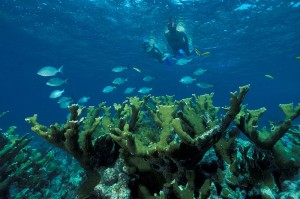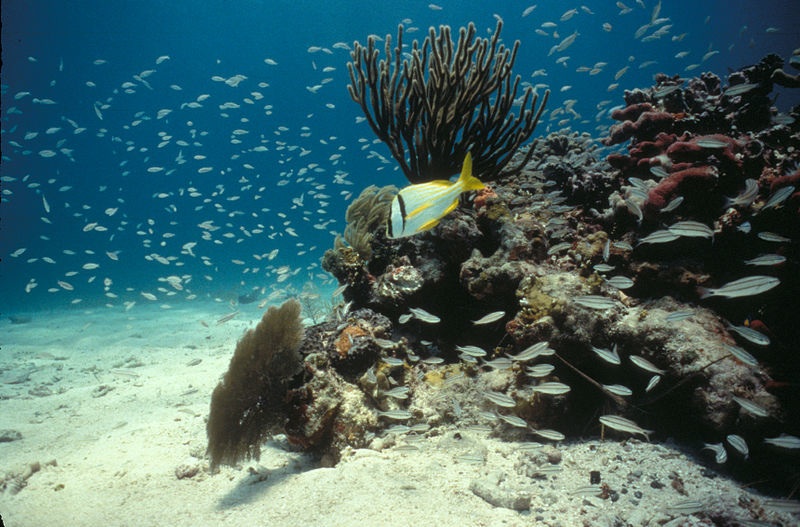Why we need MPAs – Hope Spots for the Ocean!
November 24, 2014
“It’s not about what it is, it’s about what it can become.” Dr. Seuss
This Dr. Seuss quote from The Lorax captures the essence of marine protected areas (MPAs). Science shows that these underwater wildlife sanctuaries can sow the seeds of tomorrow’s healthier ocean. We need a healthier ocean to help ensure the survival of the global ecological and geological engine it drives – to help ensure our own survival on the planet. The creation of MPAs, or “Hope Spots” as Dr. Sylvia Earle calls them, is an actionable way to address the tremendous existential challenges the ocean faces.

Many successful MPAs range in function, from small marine parks supervised by indigenous communities to large designated cultural landmarks or protected sites. In many cases, MPAs fulfill their purpose by creating a sanctuary and defense system for an entire ecosystem. For example, President Obama recently expanded the “Pacific Remote Islands Marine National Monument” to create the largest marine reserve in the world. Many species of megafauna depend on this region for migrations, mating and spawning. Additionally, the currents surrounding these Pacific Remote Islands store some of the world’s most important nutrient sources. These nutrients are distributed through deep-sea upwelling cycles and powerful ocean “conveyor belts.” The signed proclamation fortified 490,000 square miles as a marine reserve, securing the ecosystem’s fate and vitality. If the proper management and tools are employed, this MPA should prevail and maintain a healthy thriving environment. Hopefully many countries will follow this latest example in the years to come.

Then there’s the success of the Great Barrier Reef Marine Park Authority (GBRMPA), which integrated strict “no-take” zones to safeguard the enormous ecosystem biodiversity of the Great Barrier Reef. These areas of banned fishing were strewn throughout the Great Barrier Reef tract, building in an evenly distributed and self-rejuvenating system. Dynamic communication and legislative support are among the principal factors that facilitated the creation of a system to protect this international treasure. These pivotal driving forces remain important guidelines for the future success of the GBRMPA’s large MPA and others alike.
Unfortunately, the valiant efforts of the GBRMPA are shadowed by the Australian Government’s latest decision to permit shipping lanes and coal exports through the reef. Professors Iain McCalman and Stephen Palumbi recently contributed their thoughts on the matter, comparing trends between Indo-Pacific and Caribbean corals. While Australia’s public generally strives to preserve its iconic reef, continued development would cause negative impacts that could trigger mass coral mortality. Dr. McCalman discussed how industrial-focused plans would derail long-term success in the Great Barrier Reef, further exacerbating reef vulnerabilities such as coral disease and bleaching.

All steps towards marine conservation through MPAs are positive and give us hope for a future of responsible ocean conservation. Marine protected areas also serve as useful educational tools that demonstrate the value of marine resource sustainability to tomorrow’s generations. It will be exciting to see more MPAs designated in the coming years as policy makers and the public build on the growing momentum of ocean conservation. We must find a way to live sustainably within the great systems that sustain us, and MPAs (or Hope Spots) are a key piece of the big blue puzzle.

Check out the Mission Blue Hope Spots today. Click HERE to nominate your own.
Written by Rachel Devorah
Featured image (top): A scene from Biscayne National Park. © National Park Service Digital Image Archives
References:
“FACT SHEET: President Obama to Designate Largest Marine Monument in the World Off-Limits to Development.” The White House. The White House, 24 Sept. 2014. Web. 1 Nov. 2014.
Fernandes, L., Day, J., Lewis, A., et al. “Establishing Representative No-Take Areas in the Great Barrier Reef: Large-Scale Implementation of Theory on Marine Protected Areas.” Conservation Biology 19.6 (2005): 1733-744. NSU Library Online. Web. 1 Nov. 2014.
“Marine Protected Areas Conserve, Manage, and Protect.” What Is a Marine Protected Area? N.p., n.d. Web. 08 Nov. 2014.
McCalman, I., and Palumbi, S. “Experts: Great Barrier Reef’s Biggest Threat Today Is Coal.” The Conversation. N.p., 27 Oct. 2014. Web. 08 Nov. 2014.
Singleton. “The Contribution of Very Large Marine Protected Areas to Marine Conservation: Giant Leaps or Smoke and Mirrors?” Marine Pollution Bulletin 87.1-2 (2014): 7-10. ScienceDirect. Web. 1 Nov. 2014.








